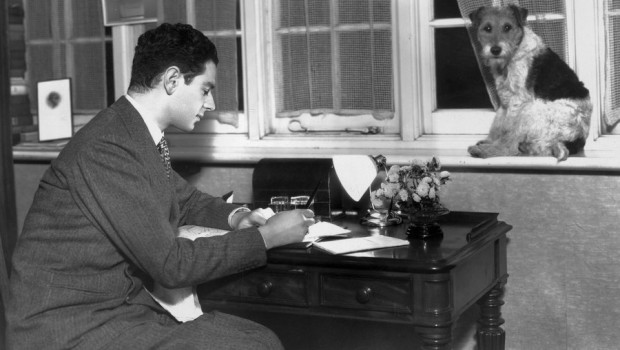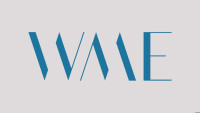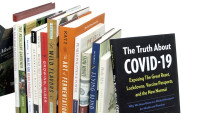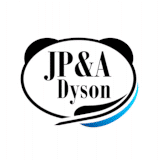What went wrong with the Writer's Market and the Writers' & Artists' Yearbook

By J. Paul Dyson
Managing Editor, firstwriter.com
firstwriter.com – Tuesday August 20, 2013
If you're anything like me, you've probably spent years buying books like Writer's Market, and Writers' & Artists' Yearbook. And if you're anything like me, then the reason you did so was to get contact details for literary agents, publishers, and magazines. You were probably vaguely aware, as I was, that there were other things in there – articles you never read, and lists of obscure things you didn't need – but you probably had the impression that they were little extras tucked in around the edges. Maybe 10% of the total. That's what I thought.
It's only recently that I've come to realise how wrong this is – just how little of these books I actually find of any use. When you start to add up the pages, it makes for some surprising statistics.
Let's take Writer's Market for starters. If you were looking for a literary agent, then this is one of the books you might think of buying. The whole book runs to over 900 pages – but how many of those pages are dedicated to contact details for literary agents, do you think? Only 10. That's not a typo. That's not meant to be "100". That's ten. Ten pages. Less than 2% of the book.
By contrast, 188 pages – over 20% of the book – is dedicated to "useful" articles such as "Earn a full-time income from blogging" and "How to get social". Is that really what you bought the book for?
The Writers' & Artists' Yearbook is just as bad. This book runs to over 800 pages, but how many of those pages are dedicated to listings of agents, publishers and magazines? If you'd told me it was less than half I'd have been disappointed. In fact it's just a quarter: only 204 pages.
So what's going on in the other 75% of the book? The 75% of the book that I didn't even notice was there? Well, there's a whole section of thick, glossy adverts; some more of those wonderful articles; and more than a dozen "notes from successful authors". These include big names: Joanna Trollope, Terry Pratchett, and J.K. Rowling, to name but a few. It sounds very impressive. So what invaluable insights do these successful authors provide? Let's take J.K. Rowling's note as an example. It's a page long. Just the one. And actually, when you take away the 16% of the page covered by the large title, and the 22% taken up by the author bio plugging the author and her new book, the other 62% only amounts to four paragraphs. But that's okay, if it's good stuff – right? After all, the back cover boasts that you'll be receiving "advice" from J.K. Rowling, so surely these four paragraphs must hold some valuable insight – some key to whirlwind publishing success?
Well, to sum it up, it goes like this: when she was writing her first book her friend advised her to consult the Writers' & Artists' Yearbook, and she did. She got some contact details of publishers and agents, and approached them.
That's it.
So – basically – the advice you are receiving from one of the most famous authors in the world (which is actually second-hand advice from her friend, who isn't one of the most famous authors in the world) is to consult the book that you must have already decided to consult in order to be reading her advice in the first place.
Genius.
The fact is that in the few paragraphs provided by most of these successful authors there's very little opportunity to convey anything meaningful. Are they included to provide insight for authors? Not really. The real reason they are included is so that the marketing people can write a long and impressive-sounding list of well-known names to put on the back cover and in their promotional material.
All of this made me start to wonder why I'm paying out every year for a whole load of pages that aren’t of any use to me – pages that are put there for the benefit of advertisers, or marketing executives, but not me, the paying customer. I realised that writers needed an alternative – a directory which was just that: a directory. No padding; no waffle; just the contact details that writers actually need.
That’s why we’ve launched The firstwriter.com Writers’ Handbook: a new, annual directory that focuses purely on the facts authors really need: a few pages explaining publishing industry terminology; a note on copyright protection; instructions on how to format your manuscript; and then just pages and pages of places to send it to. No adverts. No articles on “improving your presentation skills”. No unnecessary lists of book packagers and libraries. Just hundreds of pages of agents, publishers, and magazines.
So while Writer's Market gives you 10 pages of literary agent listings, we give you over 80.
And while Writers' & Artists' Yearbook gives you 204 pages of agents, magazines, and publishers, we give you more than 280.
But by getting rid of all the other stuff we can do this in a book that’s half the length of the other two – and which is therefore also half the price. In the US the Writer's Market has a list price of $29.99, compared to just $14.99 for our new directory. In the UK the Writers' & Artists' Yearbook lists for £19.99, compared to just £9.99 for ours – and the ebook version (which includes enhanced functionality) is even cheaper!
If you value all the lists of libraries and articles on blogging then the existing books will continue to serve you well. But if all you really want is contact details for literary agents, publishers, and magazines, then The firstwriter.com Writers’ Handbook can give you more listings for a lower price.
Publishing has gone global
One of the other key failings of the Writer's Market and Writers' & Artists' Yearbook is that they have both failed to adapt to the fact that in the last ten years publishing has transformed into a far more global industry. Ten years ago, most listings would have said “No approaches by email”. Having to use post meant that the cost and complexity of making overseas submissions effectively segregated countries into separate markets, and the Writer's Market and Writers' & Artists' Yearbook both reflect this, each concentrating strongly on their own country.
But as working practices have changed, email submissions have become more and more common and acceptable. There are now an increasing number of agents, publishers, and magazines that will only accept submissions by email. Submissions by post will not even be considered.
This means it’s often just as easy to submit to a market on the other side of the world as in your own back yard, and writers now need a directory that reflects that – a directory that offers access to the global market, not just the market in their own country. English-language publishing has two main centres: the United States and the United Kingdom (and more specifically London and New York), and if your directory isn’t offering equal access to both these markets then you could be needlessly throwing away half your chances of getting published.
That’s why we’ve ensured that The firstwriter.com Writers’ Handbook is a global directory, with unparalleled access into the major markets. This means it has lots of listings that aren’t included in the Writer's Market, and equally it has lots of listings not included in the Writers' & Artists' Yearbook.
So if you’ve been buying those books year after year – looking at all the same old listings again and again – why not take a change and try some fresh listings this year? You never know – the success you’ve been looking for might be waiting just across the pond, and might be just an email away!
The firstwriter.com Writers' Handbook 2014 can be purchased from Amazon.com in the United States, and from Amazon.co.uk in the United Kingdom. It is also available through Amazon’s other international websites.
The ebook version is also available on Kindle at an even lower price through the following links:




 Top tips for young writers – from past winners of the young writer award
Top tips for young writers – from past winners of the young writer award Simple record-keeping and tax deductions for writers
Simple record-keeping and tax deductions for writers My writing competition success - An interview with writer, Jerry Ryan
My writing competition success - An interview with writer, Jerry Ryan From writer to published author in 7 simple steps
From writer to published author in 7 simple steps My writing competition success - An interview with writer, Angela Gloker
My writing competition success - An interview with writer, Angela Gloker Getting to know you: 8 questions to ask an interested agent
Getting to know you: 8 questions to ask an interested agent Sarah Waters, Ross Raisin, Adam Foulds, Andrew Cowan, Helen Simpson share writing tips, favourite books by young writers
Sarah Waters, Ross Raisin, Adam Foulds, Andrew Cowan, Helen Simpson share writing tips, favourite books by young writers 11 authors' strategies for overcoming writer's block
11 authors' strategies for overcoming writer's block Writers can reach multitudes
Writers can reach multitudes 2 Productivity Tips From 2 Superfast Writers
2 Productivity Tips From 2 Superfast Writers Five Rules for Writers
Five Rules for Writers 6 famous writers who never made a dime
6 famous writers who never made a dime 9 writing and reading tips from writers
9 writing and reading tips from writers New Irish literary magazine ‘Ragaire’ to be launched in Galway
New Irish literary magazine ‘Ragaire’ to be launched in Galway New Literary Agent Listing: Donya Dickerson
New Literary Agent Listing: Donya Dickerson Expand your mind with a new magazine of psychedelic art and literature
Expand your mind with a new magazine of psychedelic art and literature WME Acquires Ross Yoon Agency in Expansion of Literary Talent Portfolio
WME Acquires Ross Yoon Agency in Expansion of Literary Talent Portfolio UK audiobook downloads up 17% last year, Publishers Association data shows
UK audiobook downloads up 17% last year, Publishers Association data shows Workshop: Editing point of view in fiction and narrative non-fiction
Workshop: Editing point of view in fiction and narrative non-fiction Channel 4 seeks Northern TV writers
Channel 4 seeks Northern TV writers Major International Publisher Acquires Chelsea Green Publishing
Major International Publisher Acquires Chelsea Green Publishing A look ahead to The 2024 Bournemouth Writing Festival
A look ahead to The 2024 Bournemouth Writing Festival Registration open for King’s College writing retreat
Registration open for King’s College writing retreat S&S UK to Launch Summit Books U.K. with Ravi Mirchandani at the Helm
S&S UK to Launch Summit Books U.K. with Ravi Mirchandani at the Helm Trade debates shift towards shorter books for children
Trade debates shift towards shorter books for children New Literary Agent Listing: Ciara Finan
New Literary Agent Listing: Ciara Finan
